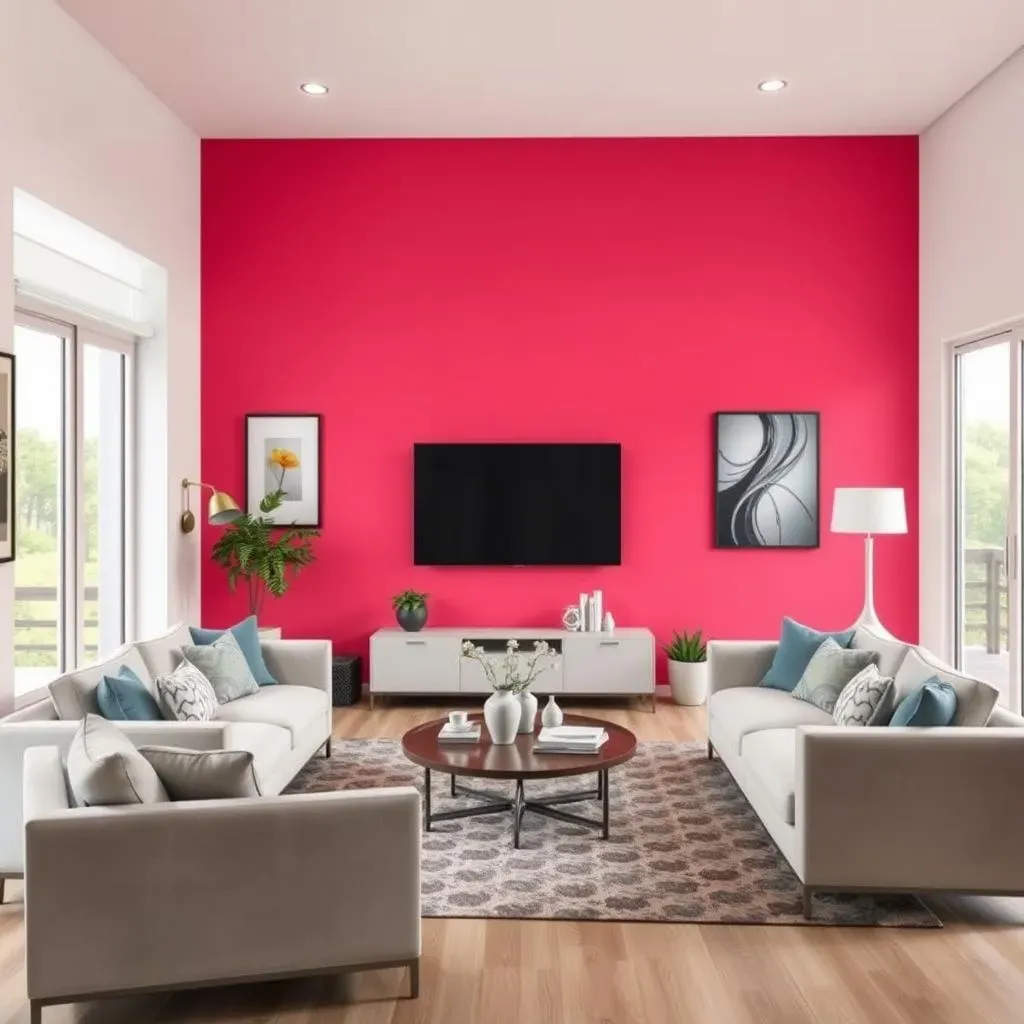Table of Contents
Tired of staring at the same four walls? Want to inject some personality and flair into your living space without a complete overhaul? Then it's time to explore the transformative power of wall paint accent ideas. An accent wall is more than just a splash of color; it's a design statement, a focal point, and a way to express your unique style. But where do you start? How do you choose the right wall, the perfect color, and execute the project flawlessly?
Choosing the Perfect Accent Wall: A RoombyRoom Guide

Choosing the Perfect Accent Wall: A RoombyRoom Guide
Understanding Focal Points
so you're ready to jump into the world of accent walls, awesome! But before you grab a brush and your favorite color, let's talk strategy. The first step is identifying the natural focal point of the room. What's the first thing your eye is drawn to when you walk in? Is it a fireplace, a large window with a stunning view, or maybe a built-in bookcase? That’s your starting point.
Think of the accent wall as a way to enhance what's already there. You're not trying to create a focal point out of thin air; you're simply highlighting an existing feature. If a room lacks an obvious focal point, consider architectural details like a unique wall texture or an interesting alcove. These can be easily transformed into eye-catching features with the right paint color.
Room-Specific Considerations
Now, let's get specific. Each room has its own unique characteristics and purpose, and your accent wall should complement those qualities. In a bedroom, for example, the wall behind the headboard is a classic choice. It creates a sense of drama and anchors the bed as the focal point. For living rooms, the wall featuring the entertainment center or a striking piece of artwork often works well. Dining rooms can benefit from an accent wall that highlights a beautiful hutch or buffet.
Don't forget to consider the size and shape of the room. A dark accent wall in a small room can make it feel even smaller, while a light-colored accent wall in a large room can help to break up the space and create a sense of intimacy. Also, think about the existing furniture and decor. Your accent wall should complement the overall style of the room, not clash with it.
Quick Tips:
- Bedrooms: Behind the headboard
- Living Rooms: Entertainment center wall or artwork display
- Dining Rooms: Hutch or buffet backdrop
- Small Rooms: Lighter colors to avoid feeling cramped
- Large Rooms: Use accent walls to create zones
Lighting and Architectural Details
Lighting plays a huge role in how your accent wall will look, so pay attention to the amount of natural and artificial light the wall receives. A wall that's bathed in sunlight will appear much brighter than one in a dimly lit corner. Consider using a lighter shade for walls with limited light to maximize brightness. Conversely, a darker shade can add depth and drama to a well-lit wall.
Finally, take into account any architectural details, such as windows, doors, or molding. These elements can affect the placement and design of your accent wall. For example, you might choose to paint only the wall space above a wainscoting or create a contrasting border around a window. The goal is to integrate the accent wall seamlessly into the existing architecture of the room, creating a cohesive and visually appealing design.
Lighting Condition | Recommended Accent Wall Color | Effect |
|---|---|---|
Bright Sunlight | Darker Shades (e.g., deep blues, charcoal grays) | Adds depth and drama |
Limited Light | Lighter Shades (e.g., soft grays, muted pastels) | Maximizes brightness |
Artificial Light | Warm Tones (e.g., oranges, yellows) | Creates a cozy atmosphere |
Unlocking Color Psychology: Selecting Wall Paint Accent Ideas That Resonate
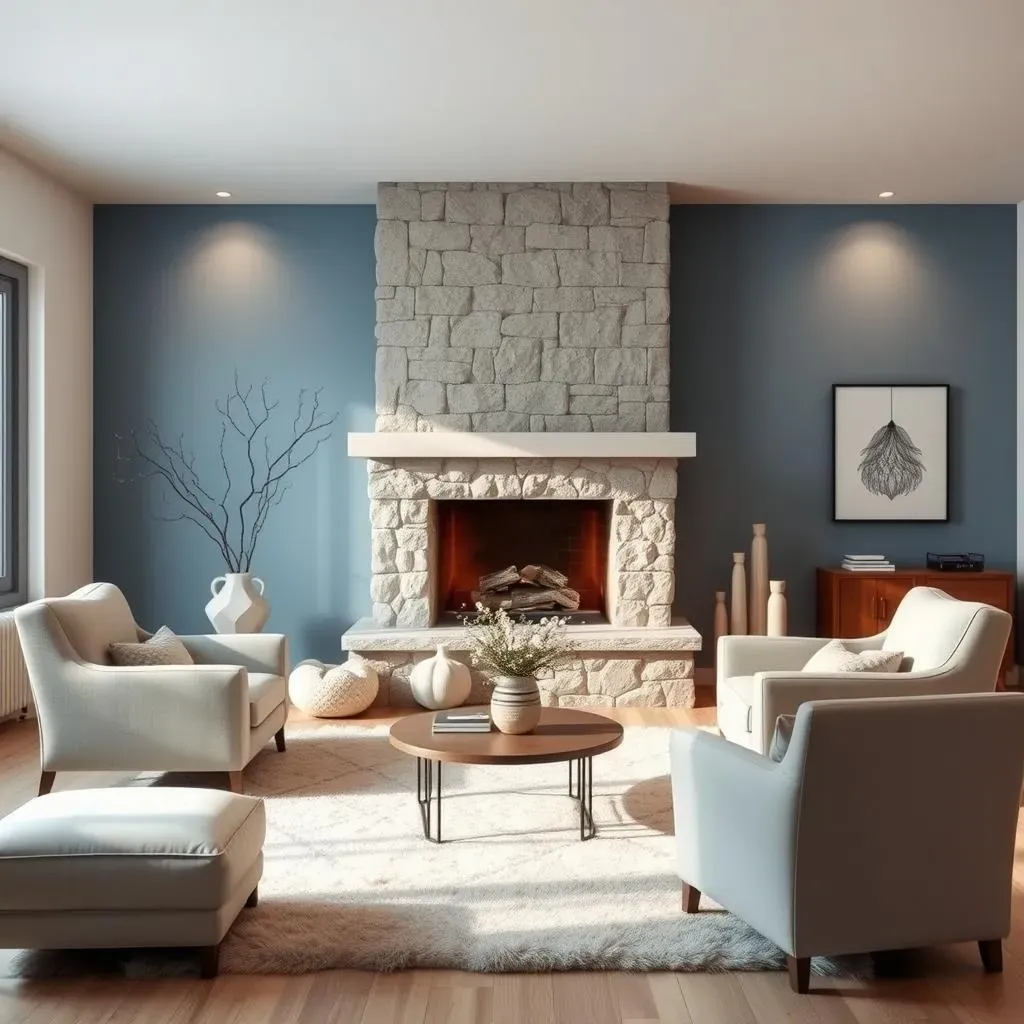
Unlocking Color Psychology: Selecting Wall Paint Accent Ideas That Resonate
The Emotional Spectrum of Color
Ever wonder why some rooms feel energizing while others are instantly calming? It's not just about the furniture or the layout; color plays a massive role. Understanding the psychology behind different colors is key to choosing wall paint accent ideas that truly resonate with the purpose of the room and the vibe you want to create. Colors evoke emotions and influence our moods, so selecting the right hues can dramatically impact how you experience your space.
For instance, blues and greens are often associated with tranquility and nature, making them ideal for bedrooms or relaxation areas. Reds and oranges, on the other hand, are energetic and stimulating, perfect for dining rooms or spaces where you want to encourage conversation and activity. Yellows are cheerful and uplifting, while purples can add a touch of luxury and creativity. It's like choosing the right soundtrack for your life, but with paint!
Harmonizing with Your Personal Style
While color psychology provides a solid foundation, it's equally important to consider your personal style and preferences. After all, you're the one who'll be living in the space! Think about the colors you're naturally drawn to in your wardrobe, artwork, and other decorative items. These are often indicators of colors that you'll feel comfortable and happy living with. Don't be afraid to experiment and push your boundaries, but always stay true to your own aesthetic.
Consider the existing elements in your room, such as furniture, flooring, and textiles. Your accent wall color should complement these elements, creating a cohesive and harmonious look. If you have a lot of neutral furniture, you might opt for a bold and vibrant accent wall to add a pop of color. Conversely, if your furniture is already colorful, you might choose a more muted or subtle accent wall to create balance.
Color | Associated Emotions | Best Room Use |
|---|---|---|
Blue | Calm, Serene, Peaceful | Bedrooms, Bathrooms, Home Offices |
Green | Nature, Growth, Harmony | Living Rooms, Reading Nooks, Kitchens |
Red | Energy, Passion, Excitement | Dining Rooms, Entryways, Accent Pieces |
Yellow | Joy, Optimism, Happiness | Kitchens, Playrooms, Creative Spaces |
The Impact of Undertones and Saturation
Choosing a color isn't as simple as picking "blue" or "green." Each color has countless variations, influenced by undertones and saturation. Undertones are the subtle hues that lie beneath the surface of a color, and they can dramatically affect how the color appears in different lighting conditions. For example, a blue with a green undertone will feel more natural and earthy, while a blue with a gray undertone will feel more sophisticated and modern.
Saturation refers to the intensity or purity of a color. Highly saturated colors are bright and vibrant, while desaturated colors are muted and subdued. The level of saturation you choose will depend on the overall style of your room and the effect you want to create. A highly saturated accent wall can be a bold and dramatic statement, while a desaturated accent wall can add a touch of subtle sophistication.
- Undertones: Consider warm vs. cool undertones to complement your existing decor.
- Saturation: High saturation for bold statements, low saturation for subtle accents.
- Lighting: Test paint samples in different lighting conditions to see how the color shifts.
20 Stunning Wall Paint Accent Ideas for Every Room in Your Home
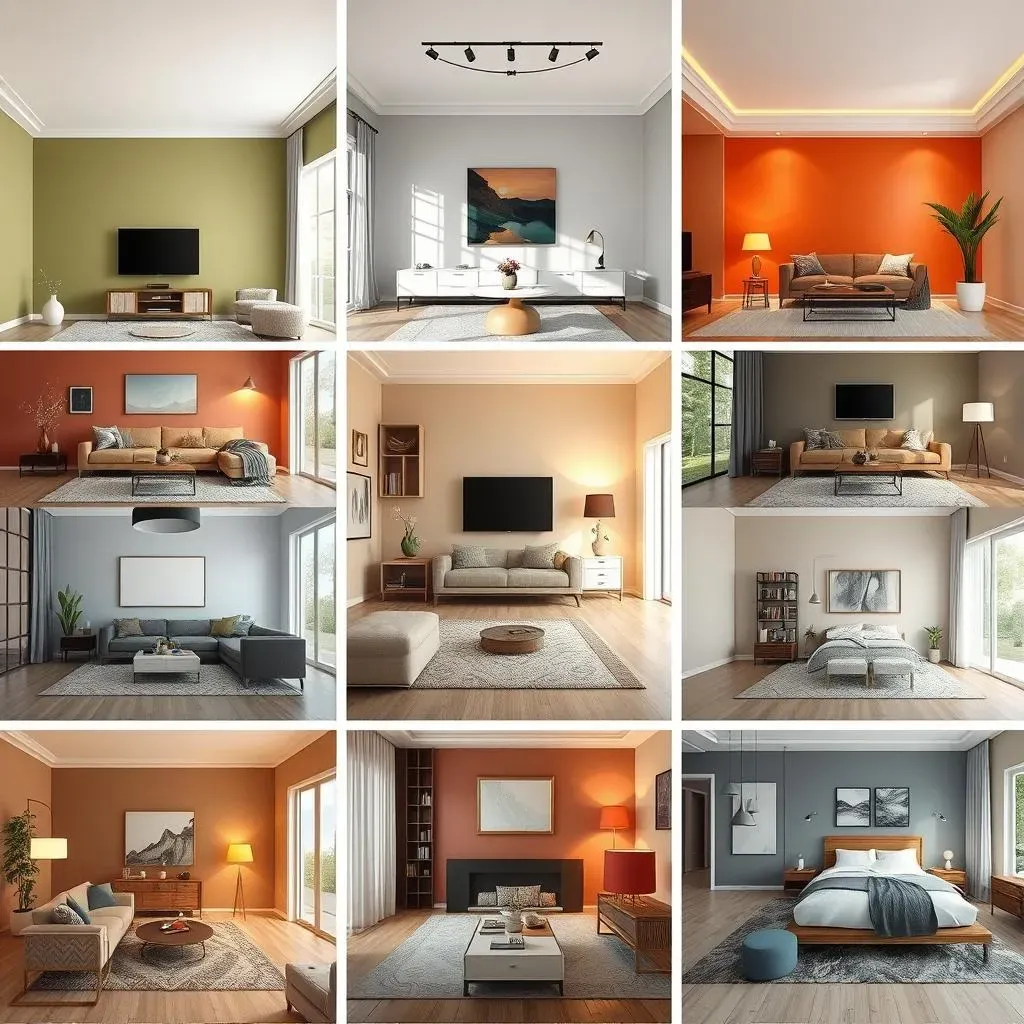
20 Stunning Wall Paint Accent Ideas for Every Room in Your Home
Dining Room Delights: Setting the Mood for Memorable Meals
The dining room is where we gather to share meals and create memories, so the accent wall should reflect that warmth and conviviality. A rich, saturated color like a deep burgundy or a warm terracotta can create a sense of intimacy and encourage conversation. These colors evoke feelings of comfort and abundance, making your dining space feel inviting and welcoming.
Alternatively, if you prefer a more modern and sophisticated look, consider a cool gray or a navy blue. These colors can add a touch of elegance and formality to the dining room, especially when paired with metallic accents and sleek furniture. Just remember to balance the coolness with warm lighting and soft textures to prevent the space from feeling too sterile.
Bedroom Bliss: Creating a Sanctuary for Rest and Relaxation
Your bedroom should be a sanctuary, a place where you can unwind and recharge after a long day. When it comes to accent walls, think calming and soothing colors that promote relaxation and sleep. Soft blues, muted greens, and gentle grays are all excellent choices. These colors have a natural, calming effect on the mind and body, helping you to drift off to sleep more easily.
If you want to add a touch of personality and flair, consider a subtle pattern or texture on your accent wall. A lightly textured wallpaper or a stenciled design can add visual interest without overwhelming the space. Just be sure to keep the overall color palette soft and muted to maintain a sense of tranquility. Avoid bright, stimulating colors like red or orange, as these can interfere with your sleep.
Room | Accent Wall Color Idea | Why it Works |
|---|---|---|
Dining Room | Deep Burgundy | Creates intimacy and warmth |
Dining Room | Cool Gray | Adds elegance and sophistication |
Bedroom | Soft Blue | Promotes relaxation and sleep |
Bedroom | Muted Green | Calming and soothing effect |
DIY Guide: Painting Your Accent Wall Like a Pro
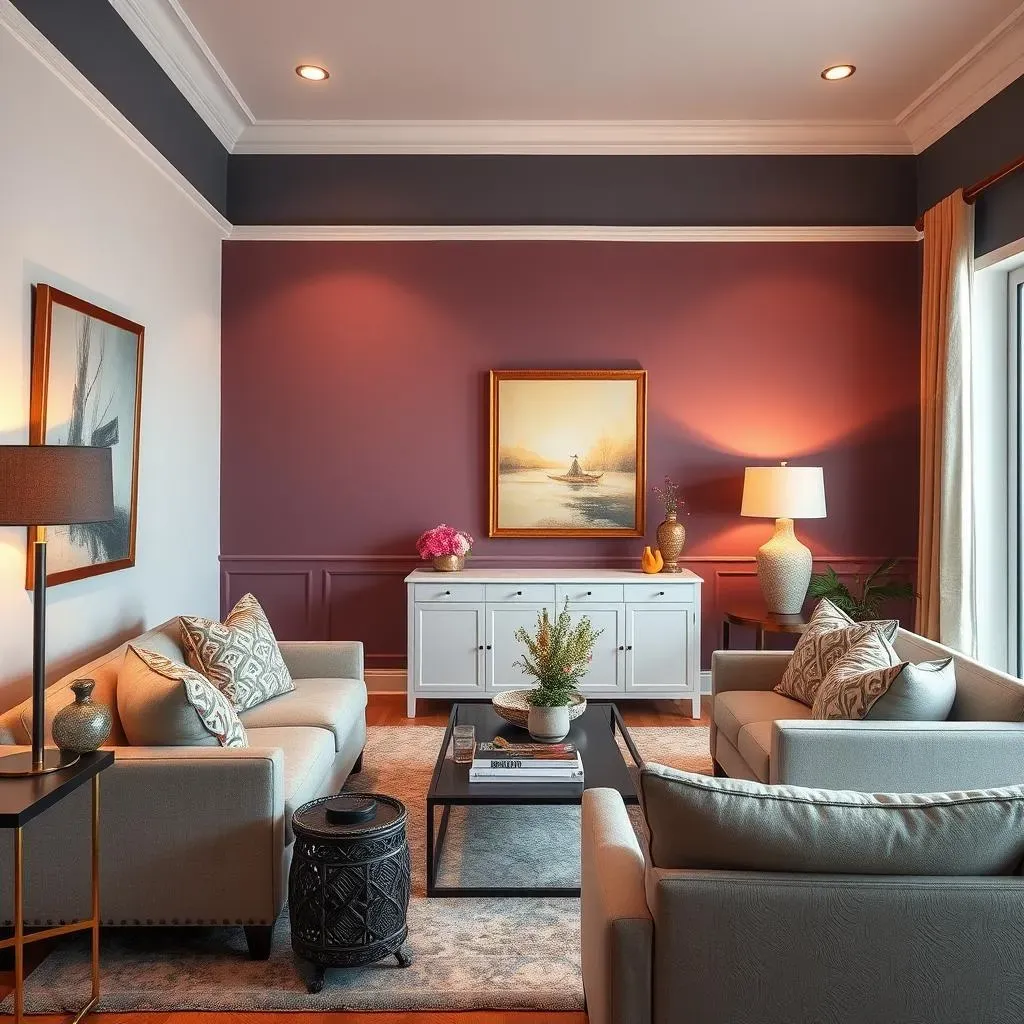
DIY Guide: Painting Your Accent Wall Like a Pro
Alright, you've picked your wall, you've got your color – now it's time to roll up those sleeves and get painting! This DIY guide: painting your accent wall like a pro is all about the prep work and the technique. Trust me, a little elbow grease upfront will save you headaches (and sloppy edges) later. First things first: gather your supplies. You'll need painter's tape (the good stuff!), drop cloths, a high-quality roller, a brush for those tricky corners, a paint tray, and of course, your chosen wall paint. Don't skimp on the paint quality – it really does make a difference in the final result.
Next, it's all about prep. Clean the wall thoroughly to remove any dust, dirt, or grime. Use a damp sponge and a mild detergent, then let it dry completely. Once the wall is clean, it's time to tape off the edges. This is where that good-quality painter's tape comes in. Apply it carefully, making sure to create a tight seal along the edges of the wall, the ceiling, and any trim. Press down firmly to prevent paint from seeping underneath. Finally, lay down your drop cloths to protect your floors and furniture. Now you're ready to paint!
Now for the fun part – painting! Start by "cutting in" around the edges of the wall with your brush. This means painting a 2-3 inch strip along the perimeter of the wall, where the roller can't reach. Use a steady hand and apply the paint evenly, avoiding drips and runs. Once you've cut in, it's time to roll. Load your roller with paint, but don't overload it – you want to avoid splatters and uneven coverage. Roll the paint onto the wall in a "W" pattern, overlapping each stroke slightly. This will ensure even coverage and prevent roller marks. Work your way across the wall, maintaining a wet edge to avoid visible seams.
Let the first coat dry completely before applying a second coat. This is crucial for achieving a rich, even color. Once the second coat is dry, carefully remove the painter's tape. Pull it off at a 45-degree angle to avoid chipping the paint. And that's it – you've successfully painted your accent wall like a pro! Stand back, admire your handiwork, and enjoy the transformation.
Step | Description | Tips |
|---|---|---|
Gather Supplies | Tape, cloths, roller, brush, paint | Don't skimp on paint quality |
Prep the Wall | Clean, tape edges, drop cloths | Use good-quality painter's tape |
Cut In | Paint edges with a brush | Steady hand, avoid drips |
Roll Paint | W pattern, overlap strokes | Maintain a wet edge |
Second Coat | Let first coat dry completely | Ensures even color |
Remove Tape | 45-degree angle | Avoid chipping paint |
Frequently Asked Questions About Wall Paint Accent Ideas
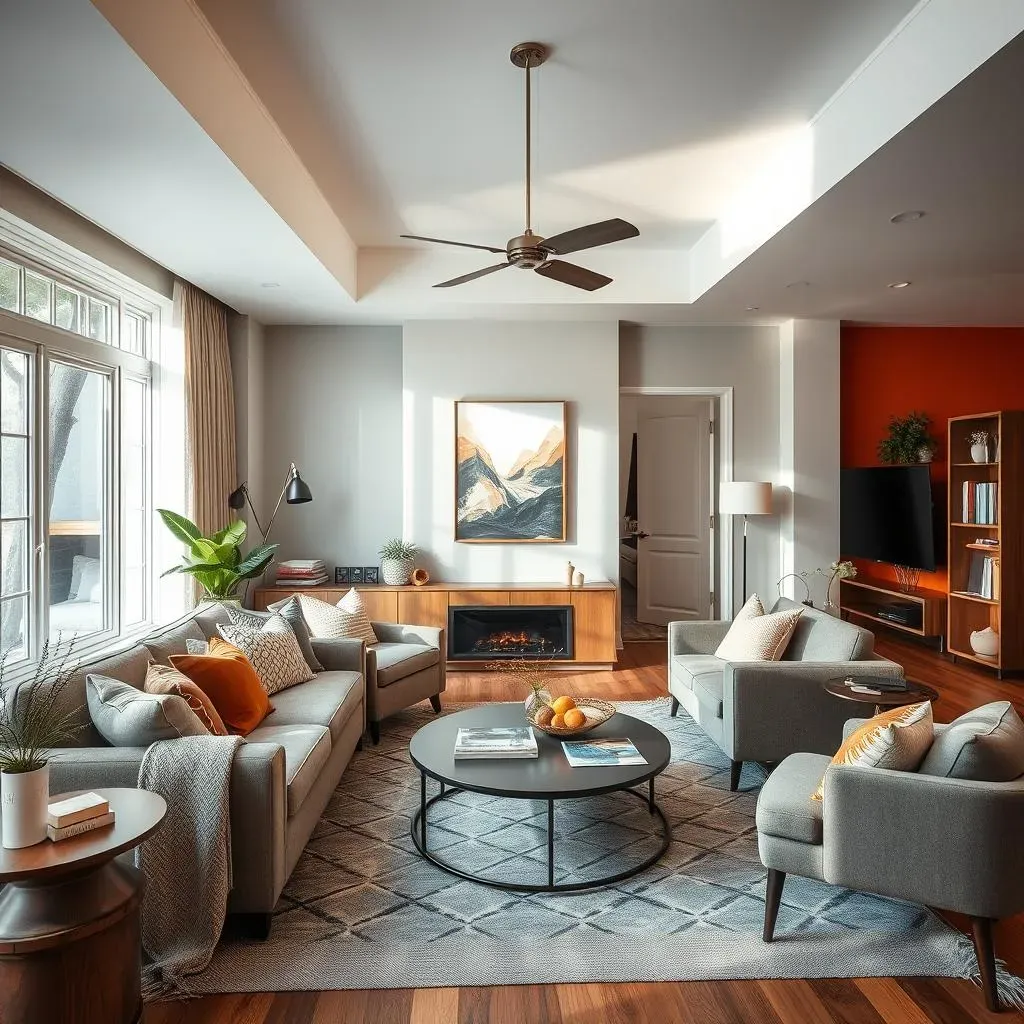
Frequently Asked Questions About Wall Paint Accent Ideas
Can I paint the accent wall first or second?
Ah, the age-old question! The answer really depends on your inspiration. If you're starting with a specific accent color in mind and building the rest of the room's palette around it, then paint the accent wall first. This gives you a clear focal point to work from when choosing furniture, textiles, and other accessories. However, if you already have a room with existing decor, paint the accent wall second to ensure it complements the existing elements and creates a cohesive look. It's all about finding the right balance!
How much paint do I need for an accent wall?
Good news – you usually don't need a ton! For most accent walls, a single gallon of paint will be more than enough to cover two coats. However, if you're painting a very large wall or using a particularly vibrant or dark color, you might want to have a quart or two on hand just in case. It's always better to have a little extra than to run out halfway through the project!
Also, consider the paint's coverage. Some paints are more opaque than others, requiring fewer coats. Check the paint can for coverage information and adjust your estimate accordingly. And don't forget to factor in the cost of primer if you're painting over a dark color or a glossy surface. Primer helps the paint adhere better and ensures a more uniform finish.
What are some common mistakes to avoid when painting an accent wall?
Oh, there are a few pitfalls to watch out for! One of the biggest is not prepping the wall properly. A clean, smooth surface is essential for a professional-looking finish. Another common mistake is skimping on the painter's tape. Invest in a good-quality tape and apply it carefully to prevent paint from seeping underneath. Also, be sure to let each coat of paint dry completely before applying the next. Rushing the process can lead to uneven coverage and a less-than-perfect result.
Finally, don't forget to consider the lighting in the room. The color of your accent wall will look different depending on the amount of natural and artificial light it receives. Test paint samples in different lighting conditions to see how the color shifts throughout the day. And most importantly, don't be afraid to experiment and have fun! Painting an accent wall is a relatively low-risk way to add personality and style to your home.
Mistake | Solution |
|---|---|
Poor wall preparation | Clean and prime the wall thoroughly |
Cheap painter's tape | Invest in high-quality tape for clean lines |
Rushing the process | Allow each coat to dry completely |
Ignoring lighting | Test paint samples in different lighting conditions |
Conclusion: Transform Your Home with Wall Paint Accent Ideas
From bold and dramatic statements to subtle and sophisticated touches, wall paint accent ideas offer endless possibilities for enhancing your home's interior. By carefully considering the room's architecture, your personal style, and the psychology of color, you can create accent walls that not only add visual interest but also reflect your unique personality. So, grab a brush, choose your favorite hue, and embark on a colorful journey to transform your living spaces into personalized havens. With a little planning and creativity, you can achieve stunning results that will leave a lasting impression.
